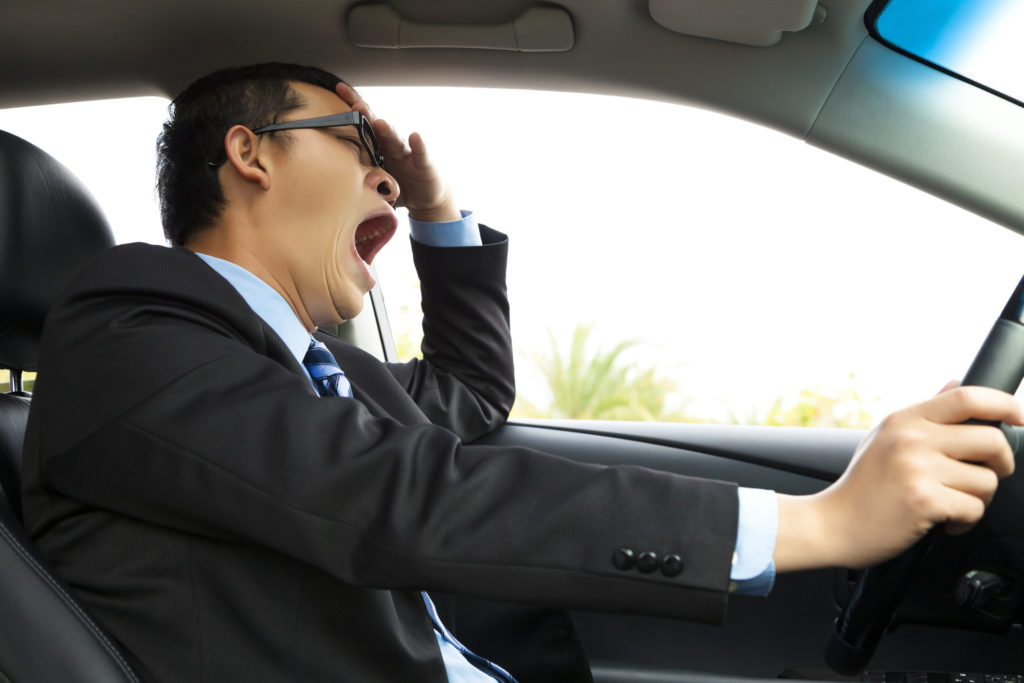
A shocking one in 25 drivers aged 18 and older report having fallen asleep while driving in the previous 30 days, reports the Centers for Disease Control and Prevention. The National Highway Traffic Safety Administration estimates that fatigued driving caused 72,000 crashes, 44,000 injuries, and 800 deaths in 2013.
If you have been involved in an auto accident and believe the other driver was fatigued or asleep, you may be entitled to compensation for your medical costs, vehicle damage, pain and suffering, and more.
Let’s explore the issue of fatigued driving: its causes, the liability issues, and how to prevent it.
Factors that can lead to drowsy driving
In order to prove the other driver was liable for the accident, it will likely be necessary to investigate the factors that may have caused the individual to nod off at the wheel.
Some common risk factors for fatigued driving include:
Medication side effects: Many medications – including antidepressants, cold tablets, antihistamines and pain killers – cause sedation as a side effect. These medications typically come with warnings not to drive after taking them. If the person disregarded these warnings and drove anyway, they could be liable. In addition, prior or chronic use of sleeping pills can lead to sleepiness while driving.
Shift work: Many jobs and industries require staff to keep unusual hours or to work around the clock. Typical shift work jobs include police officers, firefighters, retail clerks (especially during the holidays), truckers, pilots, nurses and doctors. Shift work can lead to a condition known as Shift Work Sleep Disorder.
Drivers with untreated sleep disorders: Drivers who do not treat sleep disorders such as obstructive sleep apnea (OSA) and narcolepsy have a higher risk than the average driver for fatigued driving accidents. In both of these disorders, the most common symptom is excessive daytime sleepiness.
Age: According to the National Highway Traffic Safety Administration, “drivers younger than 30 accounted for almost two-thirds of drowsy-driving crashes, despite representing only about one-fourth of licensed drivers. These drivers were four times more likely to have such a crash than were drivers ages 30 years or older.”
Proving liability in a fatigued driving case
After the accident, call 911 to bring emergency medical services and the police to the scene. The police officer will investigate the situation to determine if traffic laws were violated and who was to blame. In Arizona, police officers are trained to identify fatigued drivers. Physicians and emergency medical personnel can also identify the signs of factors such as pain medication use that may have contributed to drowsy driving. Both the police officer and physicians will file reports that will later be used as evidence.
Also be sure to take photographs of the vehicles and the scene. Get the names and contact information of any eyewitnesses. Exchange contact and insurance information with the other driver.
Then be sure to consult with an experienced personal injury attorney. A lawyer can conduct a thorough investigation of the case, examining the other driver’s work schedule, prescription drug use, and other habits. Lawyers can secure information from the vehicle’s black box and work with accident reconstruction experts to recreate the scene. They may be able to demonstrate, for example, that the other driver never applied the brakes during the accident, which could be viewed as evidence of falling asleep at the wheel.
If you were hit by a truck driver, the driver or sometimes the truck driving company may be liable for the accident. This could happen, for example, if the truck driving company fails to properly monitor its drivers or test them for substance abuse, including prescription drugs that cause drowsiness.
Proving liability in a fatigued driving case can be complicated. The Lamber-Goodnow Personal Injury Law Team offers complimentary, no-obligation consultations. We don’t get paid until you get paid.
Preventing drowsy driving
• Get enough sleep, regularly. The National Sleep Foundation recommends seven to nine hours of sleep per night for adults and 8.5 to 9.5 hours for teenagers.
• Recognize the warning signs of drowsy driving: yawning or blinking frequently, difficulty remembering the past few miles you’ve driven, missing your exit, drifting into the next lane, hearing the sound of hitting a rumble strip on the side of the road. Either ask your passenger to drive instead, or pull into a rest stop, hotel, or other safe area to take a nap.
• If you have a diagnosed sleep disorder or notice symptoms of a sleep disorder such as snoring at night or feeling drowsy during the day, consult with your doctor about treatments.
• If you are making a long road trip, plan to drive during the times of day when you are most awake. Schedule regular stops every 100 miles or two hours. And make sure you get enough sleep the night before.
• Avoid any over-the-counter or prescribed medications that may impair driving performance.
• Avoid alcohol, as it interacts with fatigue and increases its effects.
• Use caffeine to provide a short-term boost. However, the effects may last only up to an hour and do not provide a long-term solution.
#KC


